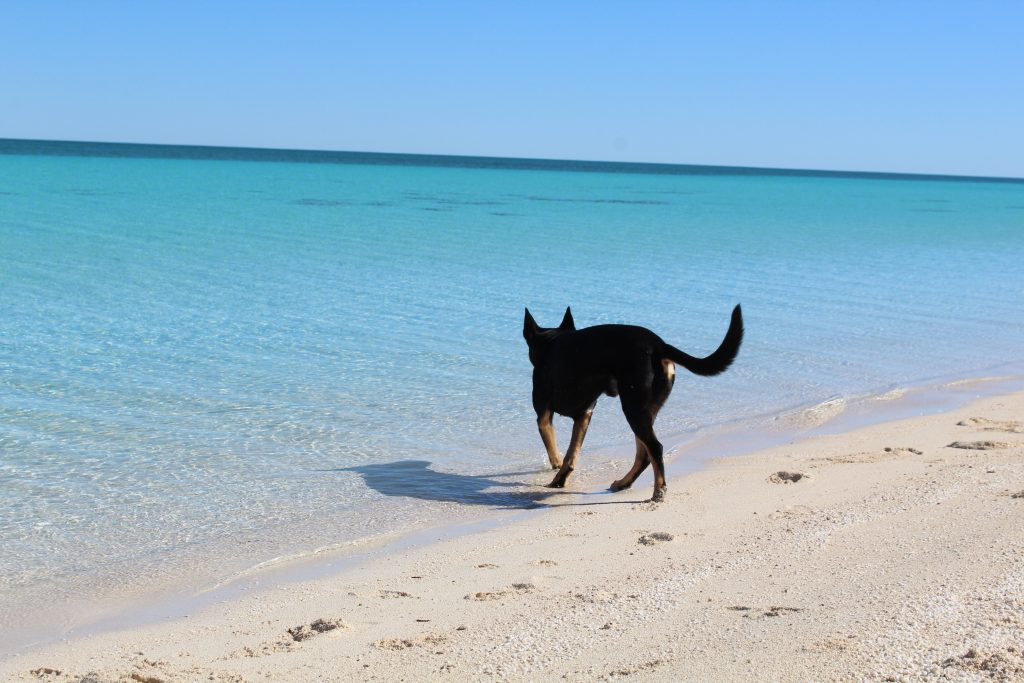A wagging tail is often associated with a happy dog, but did you know that dogs use their tails to communicate a wide range of emotions? Just like humans use facial expressions and body language, dogs rely on their tails to convey feelings, intentions, and even warnings. Understanding the different types of tail wags can help strengthen your bond with your furry friend and ensure better communication. Let’s dive into the fascinating world of canine tail signals.
1. The Loose, Full-Wag Tail
This is the classic happy tail wag! When a dog’s tail moves in a wide, sweeping motion, often with the whole body wiggling along, it’s a sign of excitement and friendliness. This kind of wag is common when dogs greet their owners or meet friendly strangers. It’s an invitation for interaction and play.

2. The High, Stiff Wag
If a dog holds its tail high and wags it in small, quick motions, it could indicate alertness, worry or thinking. This wag is often seen in working or herding breeds when they are focused on a task. However, if combined with stiff body posture, raised hackles, and intense staring, it may be a warning sign signalling danger and if not “listened” to lead to escalating requests for space and aggression.
3. The Slow Wag with a Low Tail
A slow, low wag can indicate uncertainty or appeasement. A dog may use this wag when approaching another dog or a human cautiously, signalling that they feel unsafe or unsure of the situation. If your dog does this around strangers or in new environments, they might need reassurance before feeling comfortable.
4. The Fast, High-Wagging Tail
A tail wagging quickly at a high position might indicate excitement, but it can also signal agitation. If the dog’s body is stiff and their ears are pinned back, they might be preparing to respond to a perceived threat. Context is key—this wag can mean either playful enthusiasm or potential trouble.
5. The Low, Tucked Tail Wag
If a dog’s tail is tucked between their legs but still wagging slightly, it’s a sign of nervousness, fear, or appeasement. This is often seen in dogs that are scared or feeling overwhelmed in certain situations. If your dog displays this behaviour, offering gentle reassurance and removing them from the stressful environment may help.
6. The Right-Sided Wag vs. Left-Sided Wag
Studies have shown that dogs tend to wag their tails more to the right when they feel positive emotions, such as seeing their owner or a friendly dog. On the other hand, a tail wagging more to the left may indicate stress or uncertainty. Though subtle, this directional wag can provide insight into how your dog is feeling at a given moment.
7. The Circular or Helicopter Wag
A tail that spins in a circular motion, often with the entire rear end moving, is a sure sign of pure joy! This is typically seen when a dog is extremely happy, such as when greeting a beloved person or another dog they adore. It’s the ultimate “I’m so happy to see you” wag.
8. No Wag at All
Sometimes, a dog will hold its tail still, which can indicate several emotions depending on context. A neutral, relaxed tail suggests a calm and content dog, while a stiff, motionless tail might mean the dog is on high alert, feeling tense or worried and preparing to respond to received danger. Paying attention to the rest of their body language will help you interpret what’s going on.
Final Thoughts
While a wagging tail may signal happiness, it’s essential to look at the full picture, including body posture, ear position, and facial expressions. Each dog has its unique way of expressing emotions, and understanding these subtle tail signals can deepen your relationship with your pup. Next time you see your dog’s tail in motion, take a closer look—you might be surprised at what they’re trying to tell you!